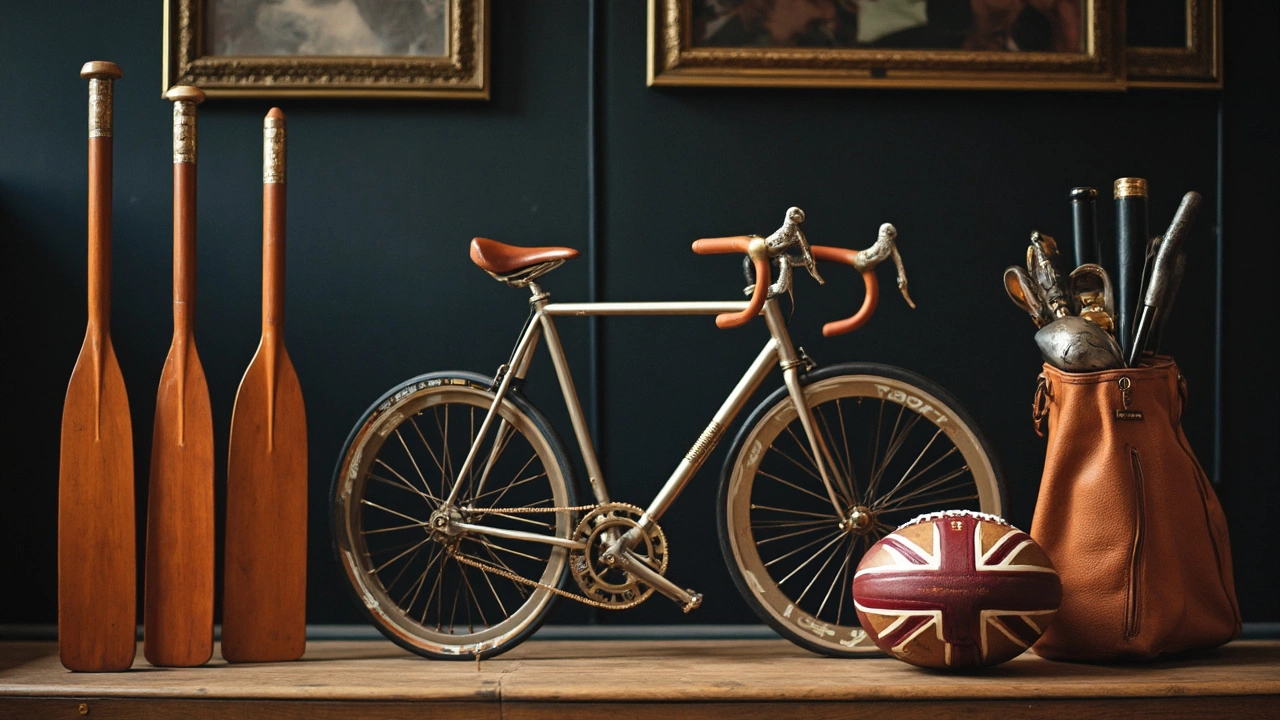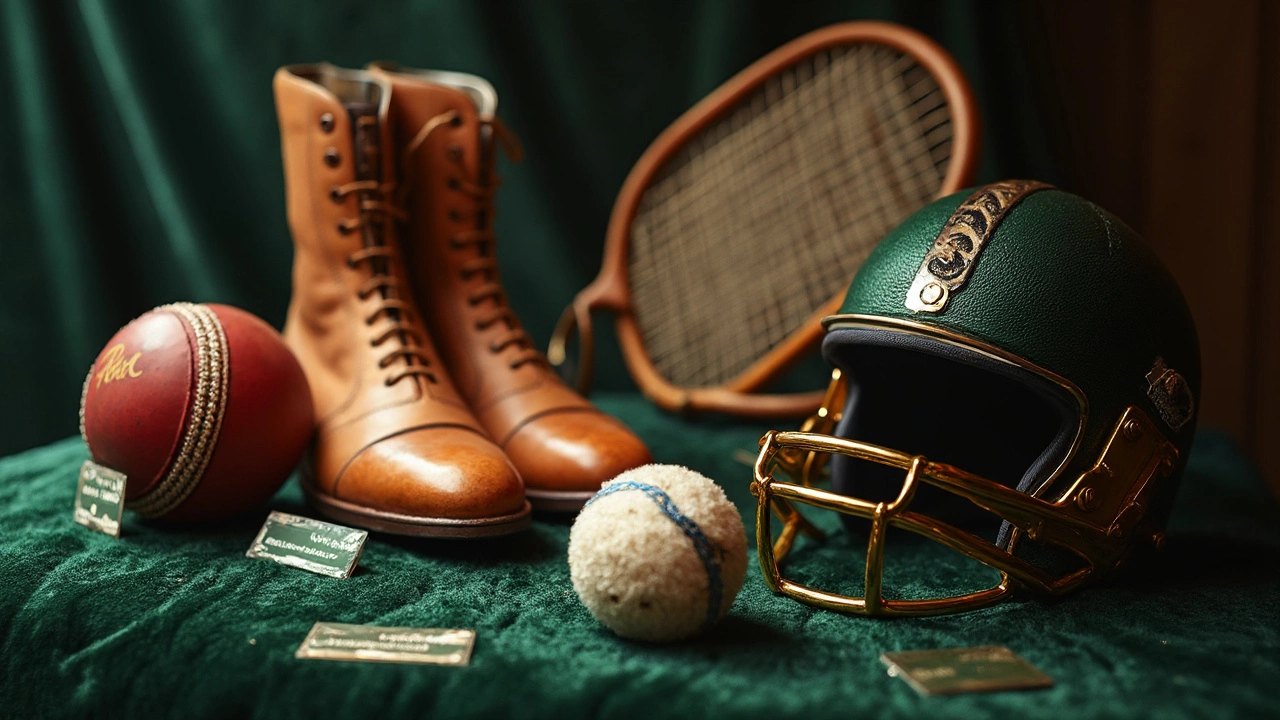
Fitness June 25, 2025
Most Expensive Sports Equipment: Surprising Price Tags and Why They Cost So Much
The price of playing a sport can go from pocket change to lottery-ticket levels, depending on what you choose. Why do some hobbies cost as much as a new car—or a house deposit? Step into the world of sports where equipment isn’t just a necessity, it’s a luxury. Ever hear of someone ski racing on $5,000 boots or saw a cyclist splash $15,000 on a bicycle? Pricey gear isn’t just about performance. Sometimes, it’s tradition, brand prestige, or pure love for the finest that money can buy. People pour fortunes into their sports not just for victory, but for identity, pride, and just a taste of exclusivity that comes with top-shelf equipment. But which sports really top the bill?
The Sports Where Equipment Costs the Most
It’s not just about having the priciest shoe or racquet, but a full arsenal of gear that racks up jaw-dropping totals. The heavyweight champ in expensive sports gear is competitive sailing—think yacht racing. A single racing yacht can run anywhere from $200,000 to millions, and that’s before you even kit it out with sails, rigging, and tech. Teams spend more on one regatta than most folks will earn in a decade.
Then there’s motorsport. Take Formula 1: a single car costs $15 million, before counting spare parts or pit crew equipment. Even amateur karting, the junior version, can swallow tens of thousands. Then we have ice hockey: skates, pads, sticks, helmets, plus repeated replacements—especially if you’re growing and breaking things regularly. Add travel, rink fees, and team dues, and the bill shoots past $10,000 a year at elite junior levels.
| Sport | Typical Cost of Top Equipment |
|---|---|
| Yacht Racing (Sailing) | $200,000 – $3,000,000 |
| Formula 1 | $15,000,000 per car |
| Equestrian (Show Jumping) | $50,000 – $500,000 per horse |
| Ice Hockey | $1,000 – $10,000 per year |
| Golf | $3,000 – $20,000 for a full set and memberships |
Equestrian sports don’t even pretend to be cheap. Good luck finding a competitive show-jumping horse for under $50,000. Add a custom saddle ($5,000+), tack, and regular care—feed, vet, stable—and you might as well start another mortgage. Professional golf brings a low-key elegance in cost. A serious amateur or pro can drop real coin on custom-fitted clubs, top-dollar golf balls, and country club memberships. One good tip: if you’re new, don’t go for pro-priced gear. The basics will get you plenty far.
Why Does Sports Equipment Get So Expensive?
There’s more to the story than simple material cost. Research and development play a massive role. Engineers spend years trimming grams off bikes, tweaking rackets, or designing yachts to slice through water faster. Often, a top-tier bicycle uses carbon fiber developed for fighter jets. In Formula 1, a single front wing alone is a masterpiece of carbon, titanium, and human ingenuity—costing more than most cars.
Handmade craftsmanship pushes up prices too. Custom-made fencing swords, tailored hockey skates, or golf clubs take hours of skilled labor. With equestrian, you’re literally buying a living athlete, bred and trained for peak performance over generations. Then there’s brand premium. A Rolex isn’t just a watch, and a high-end tennis racquet isn’t just a stick with strings. Top brands pile on costs through sponsorships, innovation, and sheer reputation.
Another sneaky cost-driver: rules and regulations. In some sports, you have to replace gear at every major event or after certain uses because of safety standards. Even in amateur youth sports, equipment bans or updates (like new helmet designs in football) force players to stay current.
Finally, the rise of technology in sports is changing everything. Now, equipment can have built-in sensors, power meters, GPS, and even AI analytics. What cost $100 ten years ago might run $1,000 today because of the electronics inside.

Expensive Sports Gear: Shocking Examples
Let’s put down the receipts. Here are some jaw-dropping real-world numbers to chew on:
- The “most expensive” baseball glove ever sold? An autographed Lou Gehrig mitt for $387,500. That’s an outlier, but high-level gloves often top $500.
- Bicycles: Peter Sagan (Tour de France champ) has raced on a Specialized S-Works worth $12,500—before upgrades.
- Formula 1 drivers wear fireproof race suits that cost over $5,000 each. A single helmet—custom fit, carbon fiber, wind tunnel tested—lands well beyond $8,000.
- Ice hockey skates used by NHL pros are often molded custom to feet, running $1,200 per pair, and at pro levels they replace them constantly through the season.
- High-end longboards or skateboards used in world competitions can fetch up to $500 for the deck alone, not to mention specialty trucks and wheels.
- Luxury golf balls—yes, that’s a thing—like the Titleist Pro V1, run $50 per dozen. Top golfers lose dozens a year.
Amateur-level sports aren’t immune, either. Travel teams and youth leagues bring surprise costs: new uniforms each year, multiple pairs of shoes, and gear bags that’d make a fashionista jealous. Sports like fencing, lacrosse, and baseball all have “beginner” setups that understate true long-term investment—wait until you outgrow those $100 cleats or need a new $300 bat each season. Parents joke that their kid’s sports closet is worth more than their car. It’s only half a joke.
Tips for Saving Money on Sports Gear
No need to panic. You can play most sports without mortgaging your future. Here’s how:
- Start with used or rental gear. The best way to test your interest without spending too much.
- Shop end-of-season sales or last year’s models. Popular with skiers, cyclists, and footballers alike, this hack can save you up to 50% off retail.
- Look for community gear exchange programs. Many towns run used gear swaps for youth sports, or offer discounts on new purchases when you trade in outgrown items.
- Don’t fall for marketing hype. Mid-level gear will suit most amateur athletes just fine. The difference only starts to matter at high-elite or professional levels.
- Join clubs for discounts. Some sports clubs and organizations get bulk-purchase rates on equipment, from hockey sticks to tennis racquets.
Another good move: set your budget up front and stick to it. Expensive gadgets or fancy upgrades rarely turn average athletes into champions. The basics, kept in excellent condition, produce far better results.

The Price Tag Isn’t the Whole Story
While yacht racing, motorsport, golf, and equestrian are famous for their sky-high costs, plenty of world-class athletes come from modest means. Top-tier talent sometimes shines through even with secondhand or hand-me-down gear. Sure, expensive equipment can give an edge, but heart, skill, and hustle matter far more.
It’s natural to gawk at $15,000 bikes or million-dollar yachts. But most everyday sports can be played with surprisingly affordable gear—if you know where to look, keep your eyes open for deals, and stay creative about upgrades. Nobody needs a gold-plated tennis racket to hit a winning shot. Finding what fits your budget and your goals is what counts. Every sport offers entry points for every wallet, even if the most expensive path is sometimes the loudest. Don’t let the sticker shock scare you away—the real payoff comes with the joy of the game, not the price of the gear.




